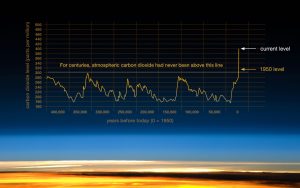
The facts are clear. This year is the hottest ever recorded and the amount of carbon dioxide in the atmosphere is higher than its ever been. One would have to be either tremendously foolish or completely centered on one own self interest to continue to maintain that this is not a problem.
The question is what are we going to do about it?
Taking too long
In my view the political process that began in Rio in 1992 and finally reached an agreement last year in Paris is simply taking too long. The good news is that so far 79 of the 197 Parties to the Convention have ratified it and since the threshold for ratification was reached on Oct 5th, the agreement will enter force on November 4th.
More good news has to do with the apparent increase in electric vehicles shown at this year’s paris Auto Show and discussed in this space last week.
In an ideal world, electric cars would be powered by renewable energy sources such as hydropower, wind, and solar. The fact is, however, that much of the energy we will use over the next 20-30 years will come form fossil fuel power plants and even natural gas, which produces less carbon than oil and coal, will continue to add to the problem.
 Carbon Storage & Sequestration (CSS)
Carbon Storage & Sequestration (CSS)
The technology which appears to be able to solve the problem consists of capturing the carbon dioxide at the power plant itself, compressing it, and then pumping the liquid form into natural formations deep underground or into the ocean at great depths. Liquid carbon dioxide is denser than water and will theoretically stay in the very deep water if we put it there. The technology can also be applied to industrial process such as cement plants and paper mills.

According to the Center for Climate and Energy Solutions (C2ES), the first CCS power plant is the Boundary Dam coal fired power plant operated by SASKPOWER in Saskatchewan. The liquified carbon dioxide is either being sold to nearby oil fields, where it can be used for enhanced oil recovery, or stored in an experimental carbon sequestration project.
There are also 15 active commercial scale projects currently operational in different industrial applications and another 45 in development.
C2ES estimates the cost of CCS to run from $15 per ton for a power plant to 30-40/ton for different types of chemical plants as¡nd as much as $ 80 per ton for a cement factory.
What are we waiting for ?
While I strongly support the Paris agreement and the process it is starting, I also believe that more could be done such as the wide spread implementation of CCS technologies.
While there are a number of ways to go about it, a good starting place would be to place a tax of something like $ 20 per ton on carbon emissions. That would do a lot to stimulate sales of electric cars and implementation of CCS technology.

